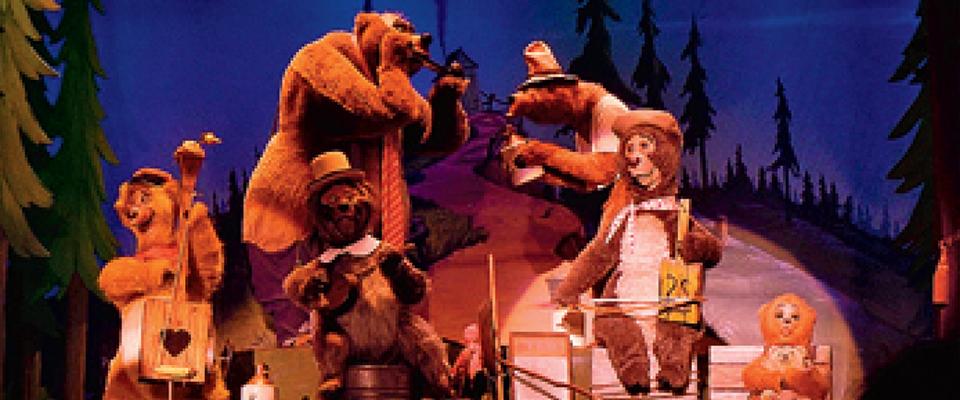The Center for New Music and Technology’s interdisciplinary work bears fascinating fruit.
Alto saxophonist Steve Coleman leaned back in his chair and slid a sheaf of sheet music across the table to give me a glimpse of a recent composition. At least I assumed it was sheet music, though it was covered with markings that looked more like hieroglyphics than traditional notation. “The computer program I’m using, Rameses 2000, draws on astrology and the I Ching, and all these different symbolic things, turning them into music,” Coleman explained.
It was my first visit to Berkeley’s Center for New Music and Audio Technologies, and I was getting an introduction to a little-known world tucked away in the Berkeley hills where cutting edge musicians and composers work with technologies that seem one step away from science fiction.
To a greater extent than most research programs, CNMAT (pronounced sen-mat) brings a truly interdisciplinary perspective to exploring fundamental questions about the relationships among technology, composition, and music making. Although it is part of the Department of Music, CNMAT encompasses University faculty and students from architecture, computer science, electrical engineering, mathematics, statistics, mechanical engineering, psychology, physics, and space sciences, as well as the Department of Theater, Dance, and Performance Studies.
With some of the university’s finest minds concentrating on technical challenges, CNMAT projects can seem esoteric, but they often boil down to nuts-and-bolts investigations. Researchers design software for composers and hardware for musicians to expand the sonic possibilities of their instruments, microphones, and speakers—say, providing electronic interfaces that enable a player to directly alter the sound of a violin. For Coleman, the opportunity to work with programmers conversant in the language of advanced improvisation proved irresistible.
Best known as a founder of the seminal M-Base Collective, Coleman had mostly kept his distance from academia. He did put in a two-year stint teaching improvisation in Berkeley’s music department, drawn mostly by the opportunity to explore custom-designed software applications with his band. He began working directly with CNMAT software designers when he realized that the intricate programs he envisioned didn’t exist yet. “You can’t just go to the store and say ‘Give me some I Ching music software,'” Coleman said. “But that’s what I thought before I started programming computers. I went into a store and said, ‘Do you have this?’ and the guy laughed at me. That’s when I realized it doesn’t work that way.”
Like so many, Coleman was coaxed into the CNMAT fold by David Wessel, who has helped direct the program since shortly after its 1987 founding. A rumpled looking man with a kindly, distracted manner, Wessel embodies CNMAT’s exploratory spirit. He earned a doctorate in mathematical psychology from Stanford in 1972; and he has honed innovative ways to use computers in live improvisational settings with master musicians such as Roscoe Mitchell and Shafqat Ali Khan. Rather than dwelling in a realm of pure research, he’s an artist who approaches technology as a means for exploring fundamental questions about how people perceive sound. These investigations then provide performers with tantalizing suggestions for aural adventures.
“One of the things that is critical to our way of thinking about technology is that we want to bring it to the stage,” Wessel said during a conversation in his cluttered CNMAT office. He noted that CNMAT has long collaborated with Kent Nagano and the Berkeley Symphony Orchestra and with the San Francisco Contemporary Music Players, exposure that has helped bridge the gap between R&D and audiences.
“The commercial people are doing a pretty darn good job of providing tools for music production and post production … in studio contexts. We’re really interested in bringing technology to the practice of performance. We openly admit that in order to succeed in this, musicians are going to have to think about developing new performance practices.”
As a music-obessed technophobe, I’ve been drawn back to CNMAT again and again by the artists associated with the program and its new ways of making music. CNMAT research often involves creating new instruments, electro-acoustic hybrids that enable musicians to create a broader array of sounds and textures. The resulting music can be strange and beautiful, harmonious and lyrical, or atonal and squally. But it’s rarely boring.
Myra Melford, the pianist/composer who took over Coleman’s position teaching improvisation, is the kind of musician idealy equipped to put CNMAT tools to the test. A celebrated figure on the New York scene for two decades before moving to Berkeley, she’s known for her high-energy, percussive attack, though she’s also a lyrical player with a passion for classical Indian music. Melford had long wanted to explore electronic music. Working with CNMAT Research Director Adrian Freed, Melford is seeking to overcome the problems inherent in amplifying the piano with the lid open—even the best microphones tend to pick up sound from other instruments. “When I play some little tiny sounds within the piano, I want them to be audible,” Melford said by phone from her Berkeley office. “With normal mics, I can’t boost them high enough. Using contact microphones and attaching them underneath, we get very little bleed-through, and the little details come through quite well. We’re still working on how to control the volume with a foot pedal or software, so I can manipulate the amplification when playing in an ensemble. And then the next step is figuring out how to take that on the road, controling volume and making it portable.”
CNMAT attracts some of the most promising musicians, such as pianist/composer Vijay Iyer. These days he’s a leading force on the New York jazz scene, but in the mid-’90s he was a disillussioned doctoral student in Cal’s physics program. On the verge of dropping out to pursue a career in jazz, he decided to take Wessel’s undergraduate course in computer music and cognition. Noting that Iyer’s creative ambition was rapidly eclipsing his interest in academia, Wessel persuaded him that CNMAT could provide an intellectual framework for deeper musical exploration. Iyer ended up designing an interdisciplinary doctoral program, working with people like physics Nobel laureate Donald Glaser, and Ervin Hafter, director and principal investigator of Hafter Auditory Perception Lab.
“CNMAT is created in David Wessel’s image,” Iyer said during a recent phone interview from New York City. “It ended up being this space for a lot of music and intensive research on arcane details of sound synthesis and file formats for audio. It seems extremely technical, but because he’s a musician and an artist … he has this broad perspective…. He’s at this nexus of so many different streams of music. He’s a master of creating environments for people to do interesting and innovative work.”
CNMAT reflects the Bay Area’s long tradition of rejecting rigid boundaries, but it tends to be overlooked—in part because its building at 1750 Arch Street is so well camouflaged. Tucked away on a residential street behind low brick walls and a blue wrought-iron gate, the two-story mission-style house provides a conventional setting for the extraordinary work within. For aficionados of new music, however, it is a storied address.
In the early 1970s, the great new-music baritone Thomas Buckner had turned the building into a new-music hothouse. He presented hundreds of concerts there and recorded on his label, 1750 Arch Records, seminal albums by artists such as Laurie Anderson, Pauline Oliveros, Art Lande, and the ROVA Saxophone Quartet. After moving to New York City in 1983, Buckner agreed to sell the building to the University for a modest price, essentially donating the space for an ambitious program designed by composer and music professor Richard Felciano.
Felciano set out to break through narrow thinking. “I knew I wanted it to be truly interdisciplinary, encompassing all the aspects of the Berkeley campus related to sound, including architecture which I had team-taught in,” he said. Felciano, before coming to Berkeley, spent time at the Center for Computer Research in Music and Acoustics (CCRMA) at Stanford and with Pierre Boulez at the Institut de Recherche et Coordination Acoustique/Musique (IRCAM). “I sent letters around the campus to various departments and people, and to my astonishment and joy, I got very positive responses from top-level people, like Leon Chua, a professor in the electrical engineering and computer sciences department who had been using the clarinet as an example of how chaos theory works.”
Wessel had been working with Boulez at IRCAM for a decade when Felciano approached him. Wessel is now a professor in Berkeley’s music department, though he’s also affiliated with the Department of Psychology because of his work in music perception and cognition. “I think we’ve achieved this notion that there’s common ground where intellectual free trade can take place between all these departments, always with the focus on musical activity,” he said.
Wessel is quick to credit codirector Edmund Campion as an important force in steering CNMAT. A professor of music composition with Berkeley’s Department of Music, Campion develops the center’s educational programs with the small but influential group of graduate students doing research at CNMAT, encouraging the creation of new music with or without new technologies. A composer whose intricately structured pieces often feature musicians navigating interactive computer environments, Campion, like Wessel, is committed to improvisation, though his work often stretches the usual notions of impromptu music creation, using programs and interfaces in which his gestures shape the music. For example, in his “Corail” for saxophone and computer, the computer responds directly to the live sax performance, which guides its accompaniment.
“When I talk about my work or the work we explore here, which involves engaging new and emerging technologies, it’s about seeing that work placed in the world, finding a way to be in the world. If music isn’t changing and growing, then certainly I’m not doing my job really well. We’re not inventing computer music. It’s already here. It’s everywhere around us,” Campion said.
Campion’s work has required the development not only of specially designed software, but also new speaker technologies. This has fueled a fascinating relationship between CNMAT and Meyer Sound, a company based in Berkeley that is revered by audiophiles and depended upon by rock bands and concert venues for accurate sound reproduction.
“A few years ago we started to work more closely with CNMAT, developing speakers that simulate musical instruments,” said John Meyer, who founded his namesake company with his wife Helen in 1979. “Every note has a different structure. The sound field might look like a figure eight, or a big soap bubble. The goal is to change the polar pattern on a note-by-note basis, using Mac processing.
“If you were inside your car and rolled up all your windows but one, and there were people walking outside, you could hear and know how far [away] they were. If you took a snapshot of the sound coming through that window, it would look like the ripples from a bunch of rocks thrown in the water, and you could analyze that image. No matter where you are, the location of the person is the same on the other side of that window. In stereo the wave fields move, but with these systems it stays the same.”
After two decades of intensive research and music making, CNMAT continues to send its own ripples out into the world. By delving ever deeper into every aspect of how we hear, CNMAT provides ingenious tools for a disparate cast of musicians and composers to expand what we hear. Inextricably linking art and science, the program is dedicated to the notion that music and technology have much to teach each other.





















